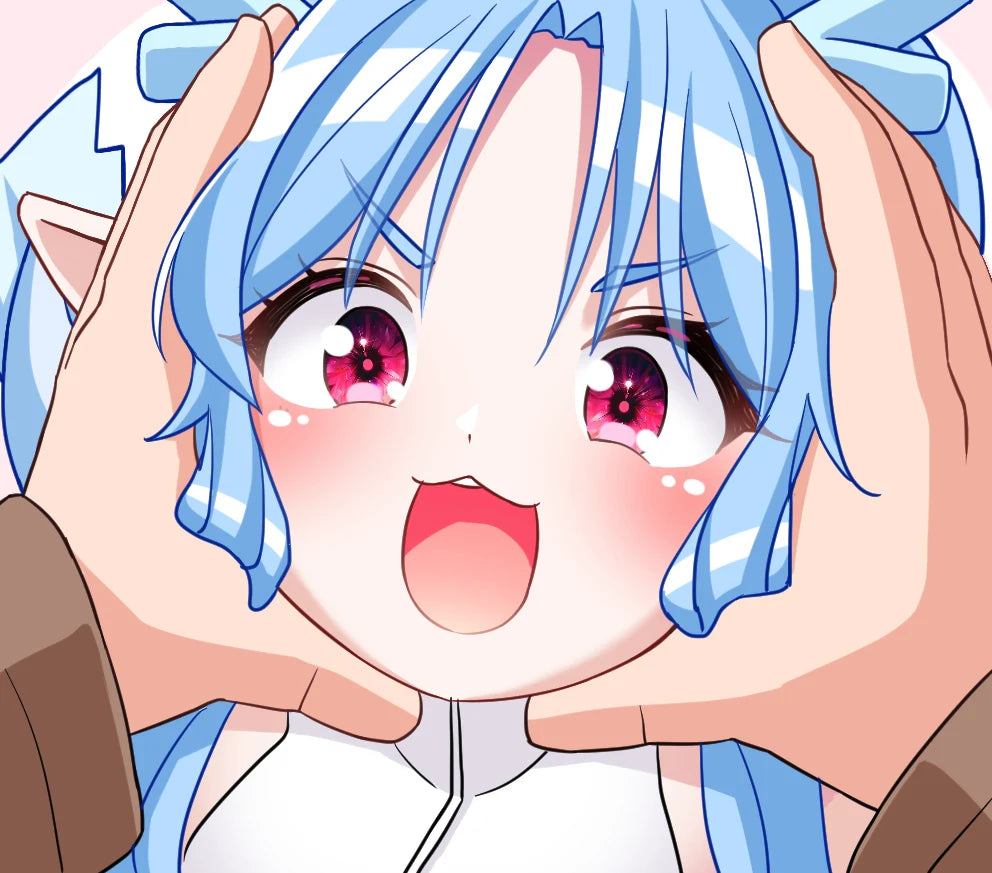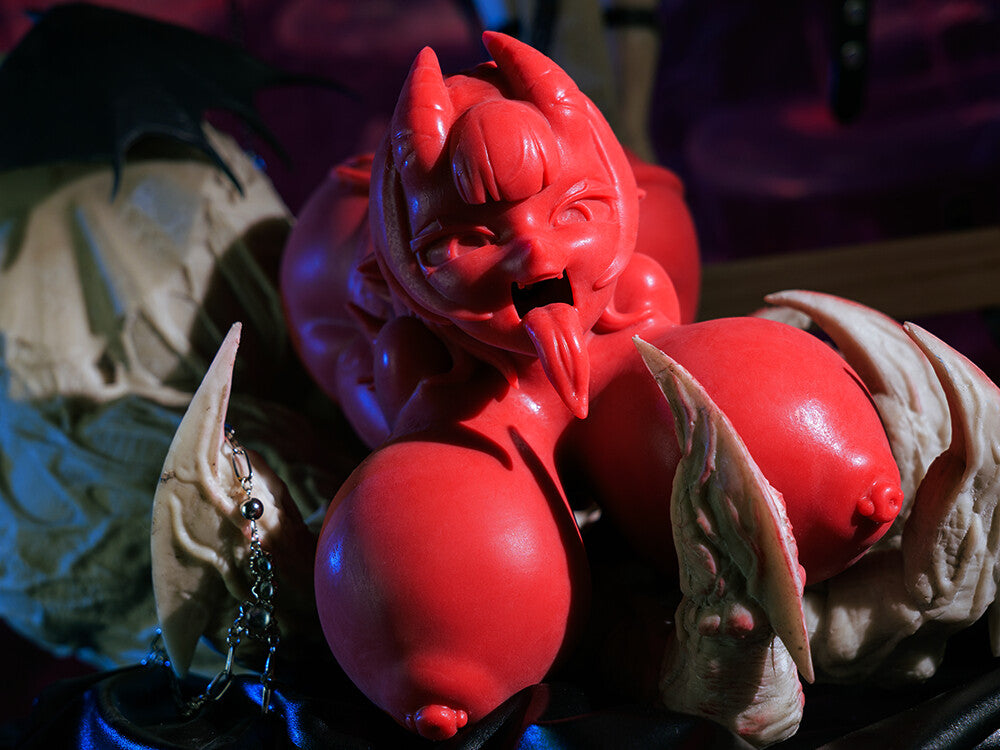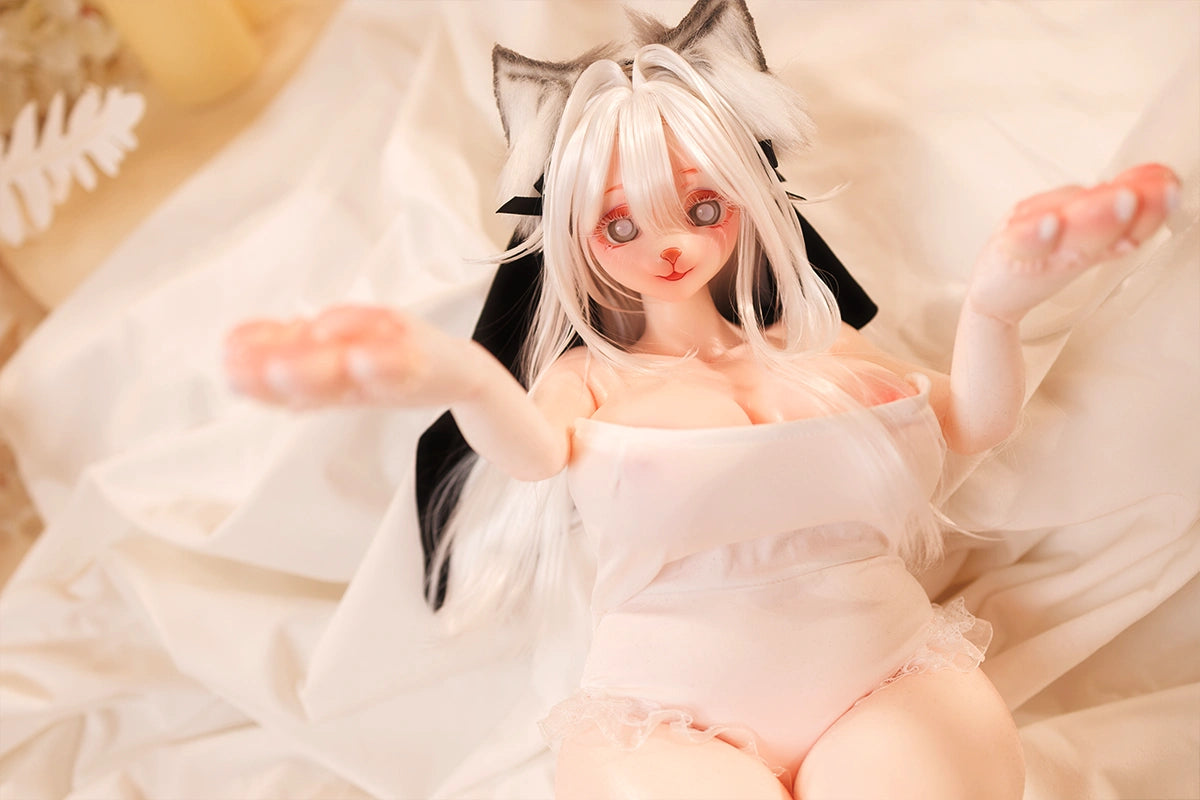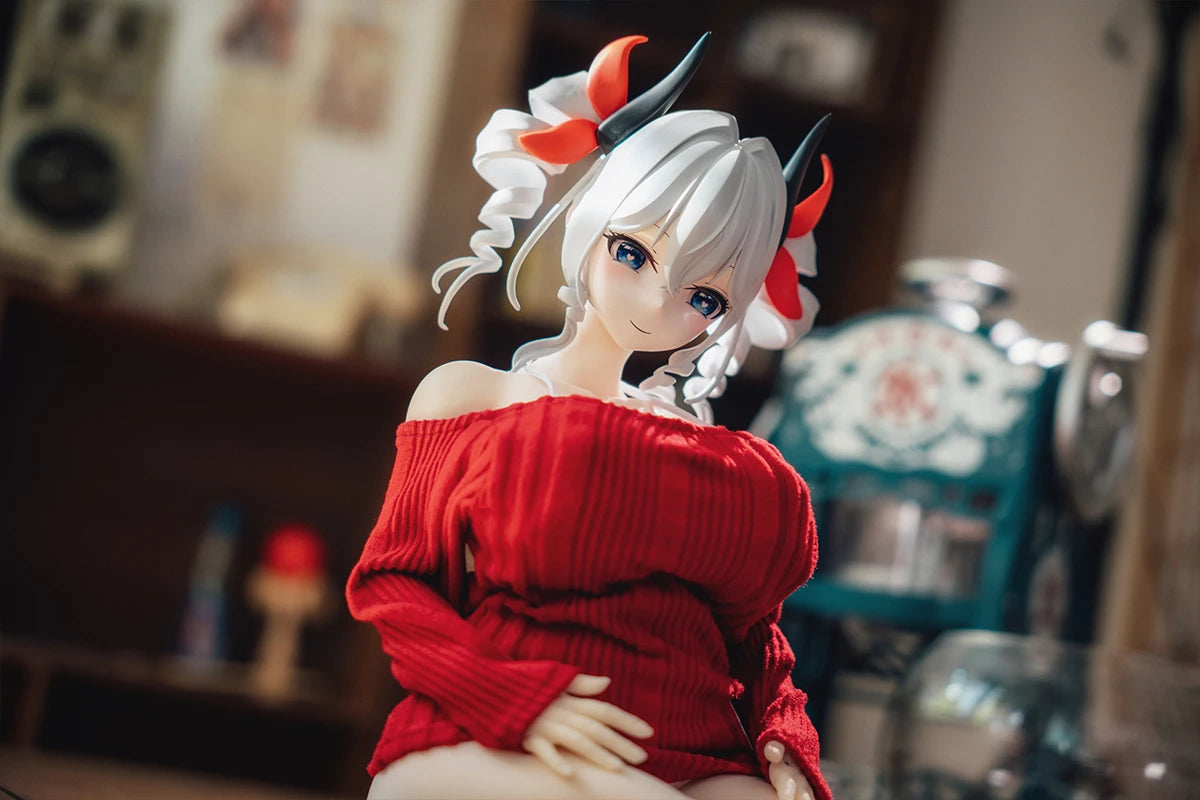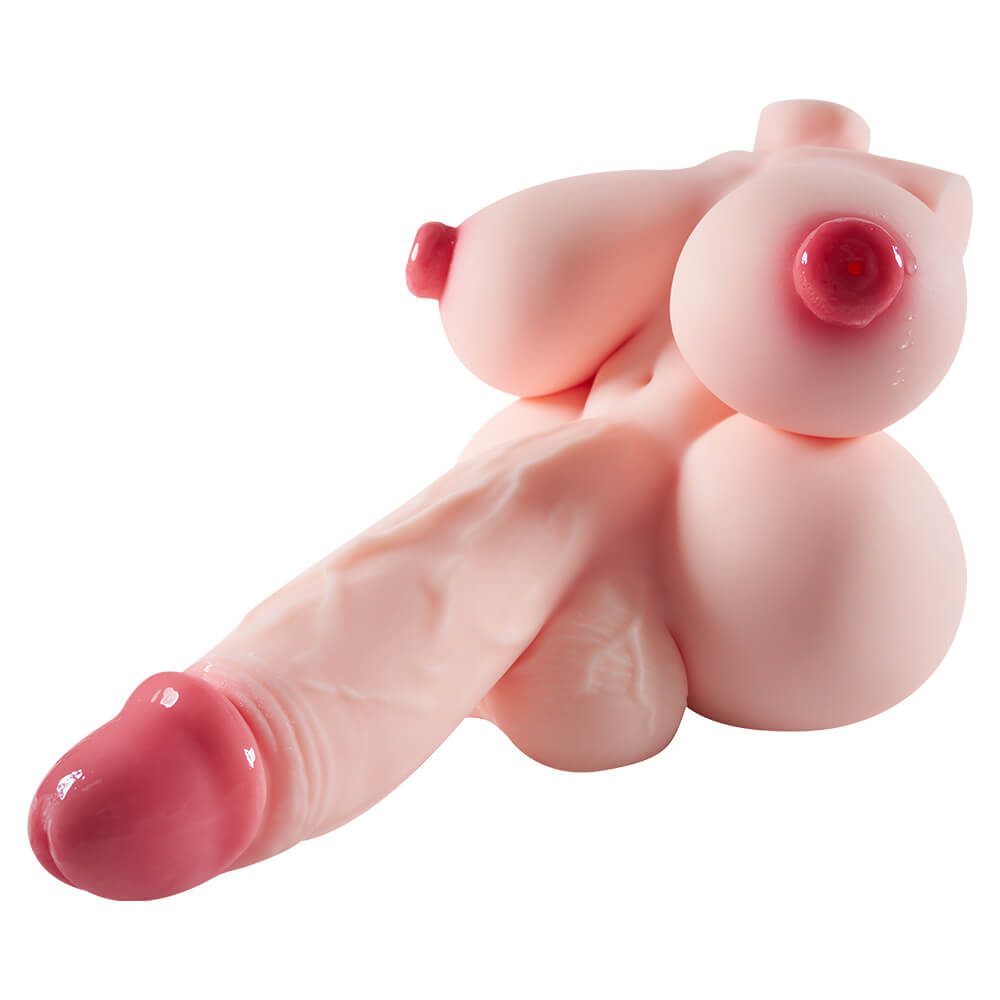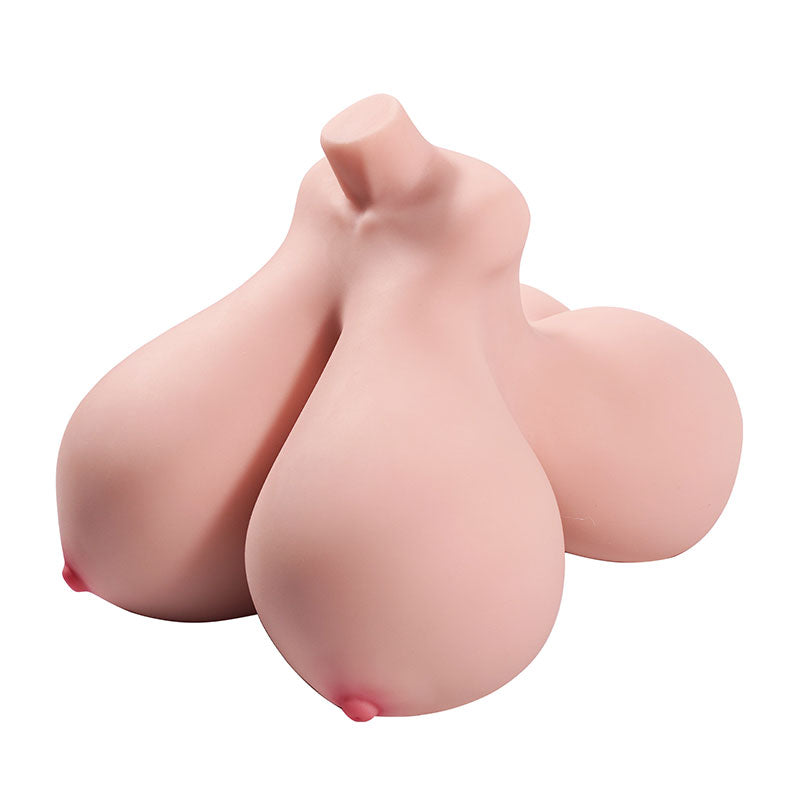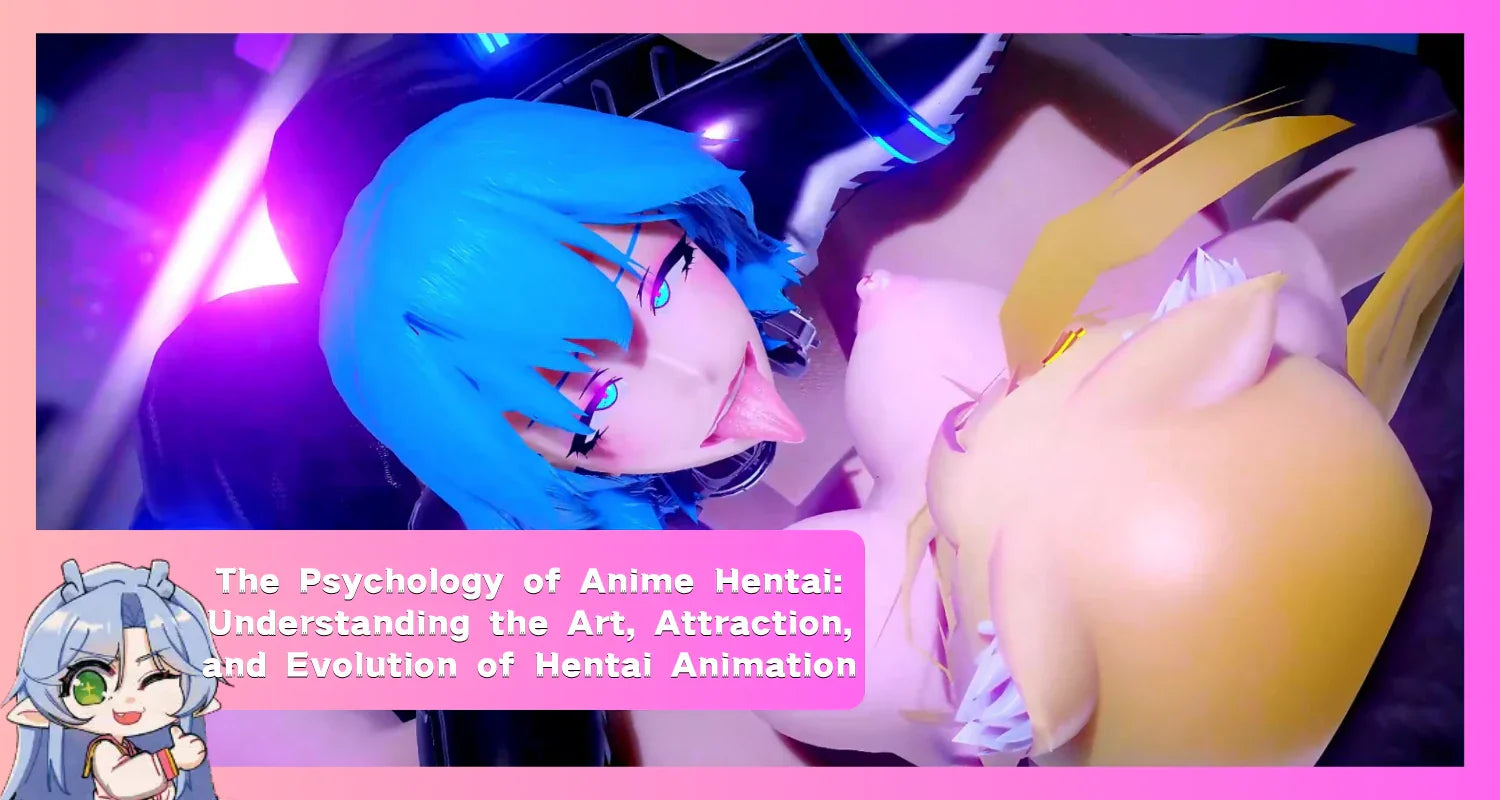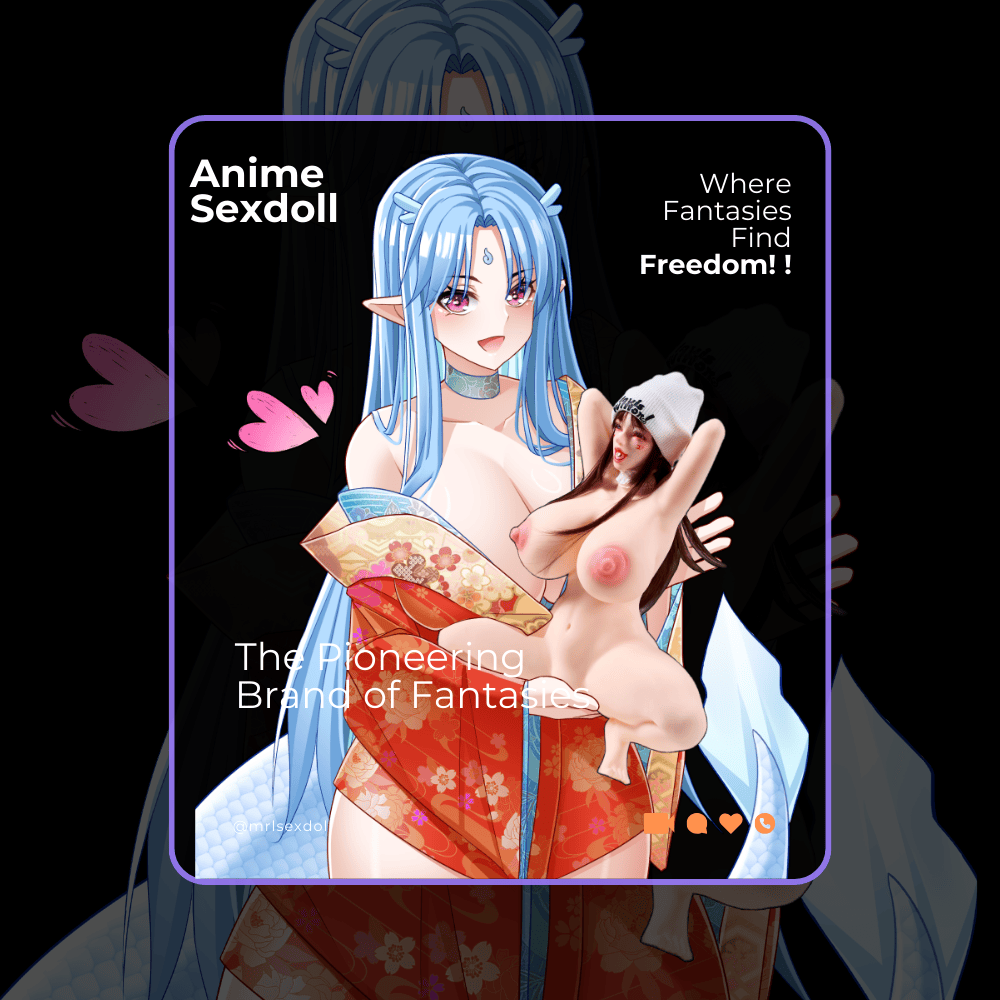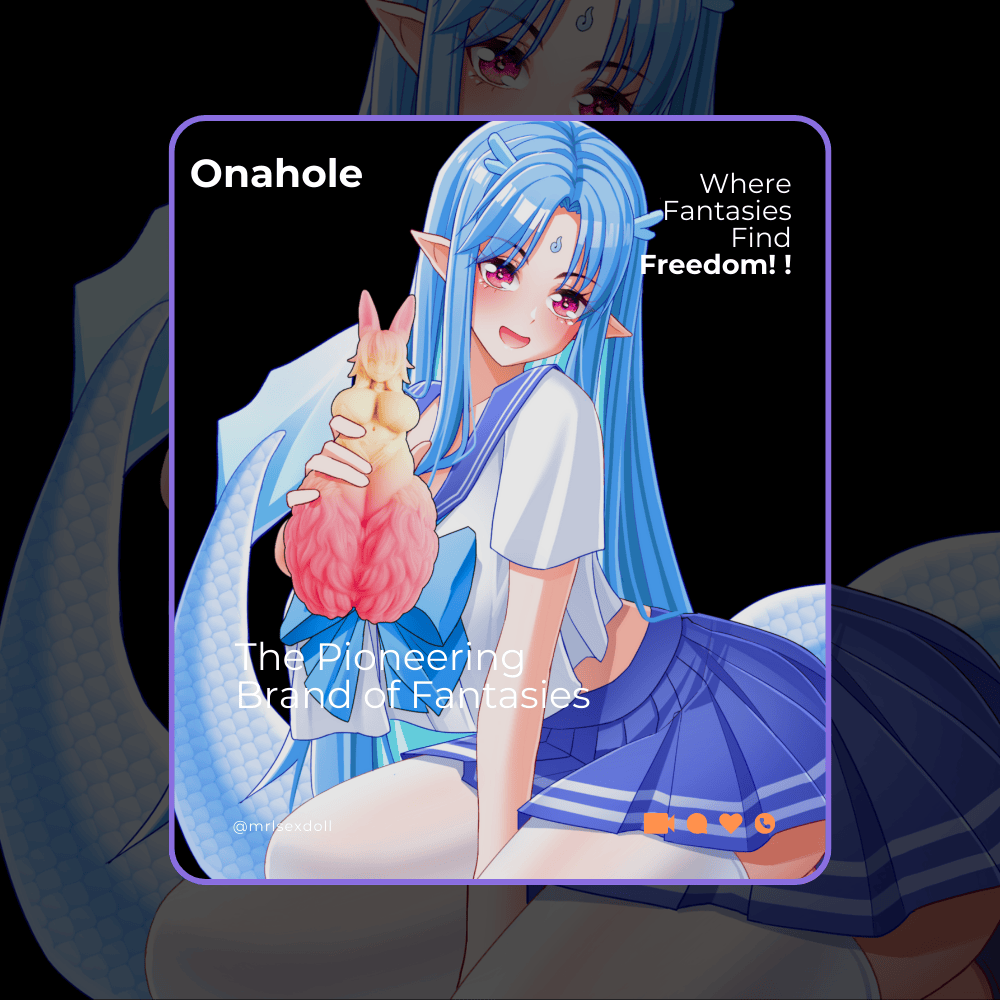The Psychology of Anime Hentai: Understanding the Art, Attraction, and Evolution of Hentai Animation
Table of Contents
1.Deconstructing a Genre: The True Meaning and Origins of Anime Hentai
2.The Psychological Magnetism: Why We Form Deep Connections with Hentai Animation
3.The Art of Seduction: A Look into the Visual Language of Anime Hentai
·The Spectrum of Styles: From Realistic to Hyper-Stylized
·Decoding "Motion Anime Hentai": The Techniques Behind the Movement
4.From 2D Fantasy to 3D Sensation: The Rise of the Hentai Sex Toy
5.Frequently Asked Questions
The world of Japanese animation is incredibly large and varied, with stories that cover every genre you can think of. One of its most popular, but often misunderstood, types is anime hentai. While it's not always part of mainstream conversations, this genre has gained a huge global audience. It pulls in millions of people with its special mix of art, psychological ideas, and open fantasy. But what is it about hentai animation that connects so strongly with its viewers? Is it just animated porn, or is there more going on beneath the surface?
This article takes a deep dive into anime hentai, looking past simple judgments to explore its real meaning, its history, and the deep psychological reasons for its appeal. We will break down the artistic methods that make these fantasies feel real and look at how fan involvement has changed from just watching to actively participating. Whether you're a long-time fan or just curious, this guide will help you understand the art, the attraction, and the cultural importance of hentai animation.

Deconstructing a Genre: The True Meaning and Origins of Anime Hentai
To really get what anime hentai is all about, you first have to understand a key difference in language and culture. The word "hentai," as people use it in the West, doesn't mean the same thing in Japan. This "lost in translation" issue isn't just a fun fact; it's a core part of how the genre was presented, sold, and enjoyed around the world.
In Japanese, the word hentai (変態) is made of two characters: hen (変), which means "strange" or "unusual," and tai (態), which means "state" or "appearance". In everyday conversation, it's usually used to call someone a "pervert". It describes a person's character, not a type of media. While it can be used for sexual content, it points to material that is very strange or "perverse," which makes it just one part of a much bigger category. In Japan, the usual terms for adult animation and comics are seijin-anime (adult anime) or ero-manga (erotic manga).

So, how did a Japanese word for a "pervert" become the main label in the West for all pornographic animation? The story behind it is a mix of science, culture, and business. The word started to get its sexual meaning during the Meiji era (1868-1912), a time when Japan was quickly modernizing. Through translations of Western science books, like German sexologist Richard von Krafft-Ebing's Psychopathia Sexualis, the idea of hentai seiyoku (変態性欲), or "perverse sexual desire," was introduced. This clinical term, which was used to label sexual behaviors that were seen as abnormal, spread into popular culture through books and magazines. This created a public interest in things that were "erotic, grotesque, and nonsensical".
When Japanese erotic animation started coming to the West in the late 1980s and early 1990s, companies needed a simple name to market it. "Hentai" sounded unique and specific, so it was used as a general term for all Japanese animated porn. This misunderstanding was a smart marketing choice. It took many different Japanese categories and put them under one simple brand name. This made a complex cultural product easier for a new audience to understand and helped it grow into its own niche. The very term we use today came from this unique history.
To make these differences clearer, the table below explains the key terms.
Table 1: A Guide to Erotic Anime & Manga Terminology
|
Term |
Japanese Meaning & Context |
Common Western Usage |
|
Hentai (変態) |
A "pervert" or "perverse person." In media, it refers to a sub-genre of ero featuring extreme or "abnormal" sexual content. |
A broad, catch-all term for all pornographic anime and manga. |
|
Etchi / H (エッチ) |
Derived from the letter "H" in hentai. A softer term for lewdness, suggestiveness, or sex in general. |
Often used for "softcore" or suggestive content, but sometimes used interchangeably with hentai. |
|
Ero (エロ) |
Short for "erotic." The broad, umbrella category for any erotic media, including what the West calls hentai. |
Not commonly used; hentai is the preferred term. |
|
Nijigen (二次元) |
Literally "two-dimensional." A slang term for the world of anime, manga, and video games, often used when discussing attraction to fictional characters. |
An insider term used by dedicated fans. |
The Psychological Magnetism: Why We Form Deep Connections with Hentai Animation
Besides the explicit scenes, the lasting appeal of anime hentai comes from its power to create a strong psychological and emotional bond with the viewer. This bond is often built on interesting characters, stories people can relate to, and the freedom to explore deep human desires in a safe, fictional setting. The genre works like a "psychological sandbox," letting people explore feelings and fantasies without any real-world risks.
A common worry about watching pornography, including hentai, is that it might harm a person's ability to build real relationships or create unrealistic expectations. However, new psychological studies question this idea, especially when it comes to hentai animation. A key 2022 study in the journal Sexologies found that while people who watch hentai do find anime characters more attractive and want a relationship with them more, their feelings of attraction and desire for real people were no different from those who watch other kinds of porn or no porn at all. This important discovery suggests that being attracted to fictional characters doesn't mean a person can't have real-world relationships. The fantasy and reality can, and often do, exist together.

This connection is made stronger by the detailed stories often found in anime. Unlike some live-action porn, many hentai stories have complex plots and characters with many sides who grow and change over time. They deal with common themes like love, loss, trauma, and identity, which helps viewers see them as more than just sexual figures. This emotional connection is a big part of what makes it appealing. Viewers often relate to a character's problems and successes, which creates a feeling of understanding and connection. Best Hentai Manga Porn Sites on MyEroBlog.com.
This is particularly true for characters who fit popular archetypes, which are like mental shortcuts for building a connection. The tsundere, for instance, is a character who acts cold or mean at first but slowly shows a warmer, more loving side. This archetype's appeal can be explained by the "gain-loss theory" of attraction. This theory suggests that a person becomes more likable if they start out negative and then become positive, because the "gain" in affection feels more satisfying than if they were positive all along.
Of course, many people develop a strong emotional bond with these characters, who are ultimately not real and cannot be physically present. Because anime hentai is virtual, the characters can bring up strong emotions, but they can't offer physical companionship. For many, the wish to connect the virtual fantasy with physical reality has led to a growing market for high-quality collectibles. Products like the Akeno: Nyakumi Co-branding Hentai Figure are made for this exact purpose. This figure, a joint project between 3D animator Nyakumi and MRLSEXDOLL, turns the emotional bond with a popular character from hentai animation into a real, detailed object. It lets fans bring a piece of that fantasy into their own lives. The character Nyakumi, who is known for her mix of seductive confidence and deep vulnerability, is a great example of a character that viewers form these strong connections with. This makes the step from the screen to a physical object a natural next step for fans.
The Art of Seduction: A Look into the Visual Language of Anime Hentai
The psychological attraction of anime hentai is tied directly to its artistry. The visual and technical parts are carefully put together to create a powerful and engaging experience. The genre's visual style is very diverse, using a wide variety of styles and animation methods to appeal to different fantasies and story goals.
The Spectrum of Styles: From Realistic to Hyper-Stylized
There isn't just one "hentai art style." Instead, artists use a wide range of well-known anime looks, and each one carries its own feeling and theme. This choice of style is like an agreement with the viewer, telling them what kind of fantasy to expect.
·Seinen Style: Aimed at older male viewers, the seinen style often has more realistic character shapes, detailed backgrounds, and darker, moodier colors. This style is usually for stories with more psychological depth, mystery, or drama, making the fantasy feel a bit more real.

·Moe and Kawaii Styles: On the other side, moe and kawaii ("cute") styles focus on innocence, youth, and purity. These styles have characters with big, expressive eyes, soft lines, and bright, happy colors. When used in a sexual context, this style creates a sharp contrast and shows a complete break from reality, focusing instead on pure visual pleasure and escape.

·Kemonomimi Style: This style adds animal-like features—like cat ears, fox tails, or wings—to human characters. Kemonomimi is common in fantasy genres and gives characters a playful and exotic feel, mixing human qualities with something otherworldly.

·Cartoonish and Hyper-Stylized: Some works use a very cartoonish style, with thick lines, abstract designs, and animation that ignores the laws of physics. This approach, often influenced by Western animation, fully uses the medium's ability to exaggerate, creating a visual experience that is energetic and openly fantastical.

Decoding "Motion Anime Hentai": The Techniques Behind the Movement
A term that often comes up in searches is motion anime hentai. This isn't an official industry term like stop-motion anime or motion comics. Instead, it shows that a user is looking for high-quality, smooth, and energetic animation—what animators call sakuga. To get this feeling of high-quality "motion," animators use a number of special techniques to make key scenes stand out.
Unlike Western animation, which often tries to keep everything moving, Japanese animation has traditionally focused more on the quality of the art and used limited animation to be more efficient. But in the most important moments, studios put a lot of effort into sakuga to create amazing sequences. Some of these techniques are:
· Impact Frames: To make a physical impact feel stronger, animators will add one or more frames with sharp, abstract black-and-white patterns or flipped colors. This creates a quick flash that makes the action feel more powerful.

·Smears and Multiples: To give the illusion of fast movement without drawing every single frame, artists draw "smears"—which are stretched or blurry versions of a character or object. This technique fools the eye into seeing smooth, quick motion.

·Character Acting: This is the detailed animation of a character's small movements, gestures, and facial expressions. Great character acting makes a character feel alive, showing their personality and feelings through body language alone. This makes them seem more real and relatable.
·Dynamic Camera Effects: Anime is known for its movie-like style. Animators use effects that copy a real camera, like dramatic pans, fast zooms, and complex angle shots, to create a sense of depth. This makes the viewer feel like they are in the scene, not just looking at a flat picture.

·Itano Circus: Named after animator Ichirō Itano, this technique involves animating a large number of objects (like missiles or energy blasts) that fly through the air in complex, twisting patterns. This creates a visually stunning and chaotic scene.

By clearly defining this user-created term, it's easy to see that motion anime hentai is the search for animation that uses these advanced methods to provide a visually impressive and engaging erotic experience.
The Ultimate Fan Experience: Making Fantasy Tangible
The way fans connect with anime hentai has changed a lot with technology. What used to be a simple viewing experience has turned into a very interactive culture. Fans show their passion not just by watching, but by collecting, creating, and sharing content. This wish to bring fantasy into the real world has created a large market for merchandise.
Studies have shown that dedicated fans often buy things like "lewd anime scale figures" and "anime body pillows" as a way to physically connect with their favorite shows and characters. The internet and better manufacturing have given artists and companies the power to meet this demand, offering more specialized products than ever before.
In this context, the hentai sex toy is the ultimate example of this trend. It represents the final step in fan engagement by closing the last gap between visual fantasy and physical feeling. It goes beyond a simple figure for display and becomes an interactive object made for personal use. This development is the natural outcome of a deep emotional and psychological connection, turning an abstract desire into a real experience.
The Akeno: Nyakumi Co-branding Hentai Figure is a perfect example of this combination. It is the result of a direct partnership between a digital artist and a specialized company, made specifically to turn a 2D character into a 3D interactive object. With features like "soft jelly boobs" and a design that captures the character's personality, it aims to "take the experience... to the next level," fulfilling the ultimate fan desire to make their fantasy real. This blend of digital art and a physical product is the final stage of immersion, where the lines between the fantasy world and the real world intentionally and enjoyably blur.
Frequently Asked Questions
1. What is the actual meaning of the word 'hentai' in Japan? In Japan, hentai is a casual word for a "pervert." When talking about media, it means a small sub-genre of erotic content that is seen as extreme or strange. It is not the general term for animated porn, which is called seijin-anime (adult anime). The way hentai is used in the West as a general term for the genre came from a "lost in translation" marketing trend in the 1990s.
2. Is it psychologically unhealthy to be attracted to anime characters? According to scientific studies, no. A 2022 study showed that while people who watch hentai might be more attracted to anime characters, their attraction to and desire for relationships with real people are the same as those who don't watch it. This suggests that enjoying fictional characters doesn't hurt a person's ability to have real-world relationships.
3. What makes the animation in high-quality anime hentai look so fluid? The smooth feeling of motion is usually because of sakuga, which is Japanese for high-quality animation. This is done with special techniques like "smears" to show speed, detailed "character acting" to show emotion through movement, and "camera effects" like panning and zooming to create a dynamic, 3D feel.
4. Why are there so many different art styles in hentai? The different art styles allow the genre to appeal to many different tastes and story goals. A realistic seinen style might be used for a story with deep psychological themes, while a cute moe or kawaii style suggests a more lighthearted, escapist fantasy. The art style basically sets an expectation for the viewer about the kind of experience they will have.
5. How has technology changed the way fans interact with anime hentai? Technology has changed how fans interact, from just watching to actively participating. The internet has let artists reach people all over the world and allowed fans to build communities. Also, better manufacturing has led to high-quality merchandise, like detailed figures and special interactive products such as the hentai sex toy. This lets fans bring a real piece of their fantasy into their own world.
Reference List
Ask Media Group. (2025,May 19). Understanding the psychological themes and complex characters in anime. Ask.com. https://www.ask.com/entertainment/understanding-psychological-themes-complex-characters-anime
Britannica. Kawaii culture. In Encyclopædia Britannica. Retrieved from https://www.britannica.com/topic/kawaii-culture
Dolan, E. W. (2022, January 29). Psychologists have started to examine how hentai consumers differ from people who do not consume hentai. PsyPost. https://www.psypost.org/psychologists-have-started-to-examine-how-hentai-consumers-differ-from-people-who-do-not-consume-hentai/
McLelland, M. (2009, March 23). A short history of ‘hentai’. Intersections: Gender and Sexuality in Asia and the Pacific. http://intersections.anu.edu.au/issue12/mclelland.html
Miyake, R. (2021, April 6). Pui Pui Molcar drives home stop-motion anime with fuzzy characters and black humor. Japan Forward. https://japan-forward.com/pui-pui-molcar-drives-home-stop-motion-anime-with-fuzzy-characters-and-black-humor/
Sakuga Wiki contributors. Sakuga Wiki. Fandom. Retrieved from https://sakuga.fandom.com/wiki/Sakuga_Wiki
WikiFur contributors. Kemonomimi. WikiFur. Retrieved from https://en.wikifur.com/wiki/Kemonomimi
Wikipedia contributors. Hen (manga). Wikipedia. Retrieved from https://en.wikipedia.org/wiki/Hen_(manga
Wikipedia contributors. Seinen manga. Wikipedia. Retrieved from https://en.wikipedia.org/wiki/Seinen_manga
Wikipedia contributors. (2025, June 20). Hentai. Wikipedia. https://en.wikipedia.org/wiki/Hentai
Wiktionary contributors. Cartoonish. In Wiktionary. Retrieved from https://en.wiktionary.org/wiki/cartoonish
WordHippo. What is the meaning of the Japanese word 変態 (Hentai)?. Retrieved from https://www.wordhippo.com/what-is/the-meaning-of/japanese-word-8e7e80c677fef56c5ea53b25180d360eb477eaa2.html

